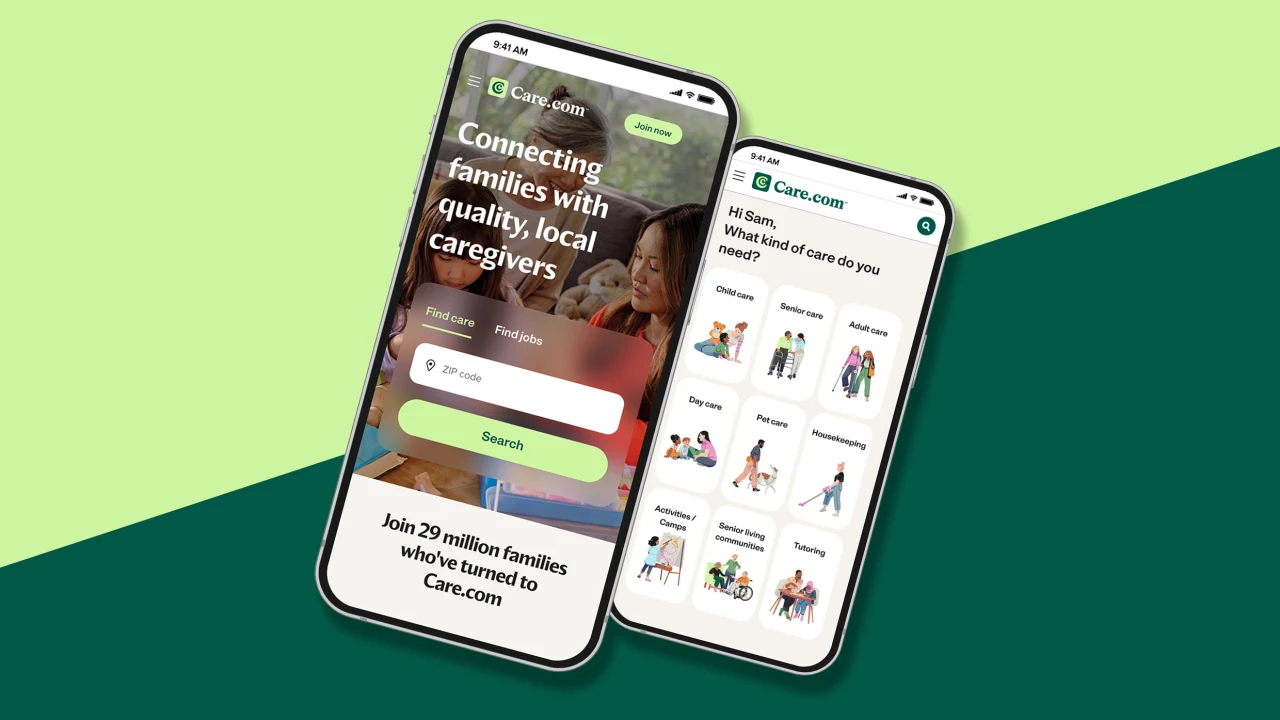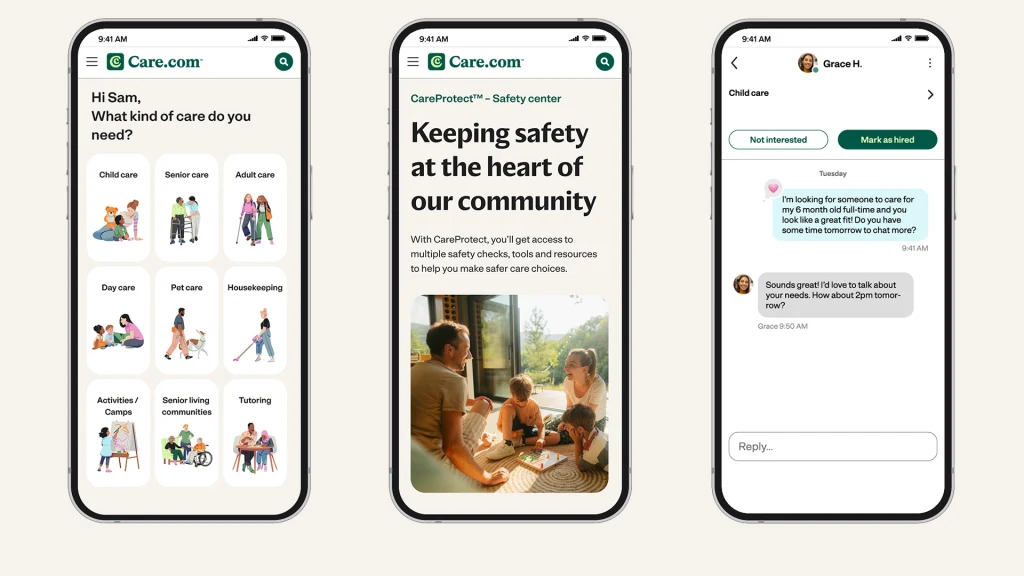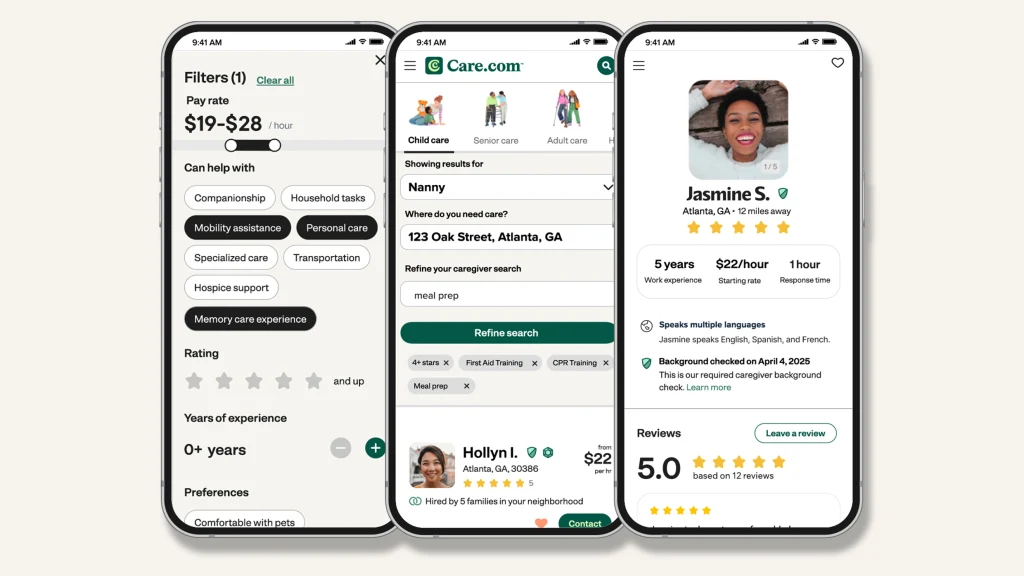America’s sandwich generation is overwhelmed. Can this app help?

Care.com launched in 2006 as a platform that helps parents find babysitters and nannies. But nearly two decades later, the company came across some disconcerting data: According to Pew, 64% of young women and 50% of young men don’t want children, a figure that has been rising in recent years.
As Care.com conducted its own research, it discovered that one significant reason for this phenomenon is that young people are overwhelmed by all the different forms of care they must provide. In a survey, the company found that 28% of people have caregiving responsibilities for parents, grandparents, and other loved ones; 35% say this makes them less likely to have children. Indeed, by 2034, the number of seniors will outpace children.
“So many of us are living in the ‘sandwich generation,’ caring for both kids and aging parents,” says Brad Wilson, Care.com’s CEO. “There’s a compounding effect.”
Care.com believes it can better position itself to be a resource at this cultural moment, providing much more than just childcare, but also senior care, pet care, home services, and even finding summer camps for kids. Today, it’s unveiling a new brand identity that highlights a more comprehensive approach to caregiving. It also launching new tools that help families manage the mental load of juggling all these different caregivers.
But the company also acknowledges that the caregiving crisis in America is also rooted in systemic issues, including the high cost of raising children and the lack of government support for families. So Care.com is also playing a role in advocating corporate and government policies that bring down the cost of caregiving.

A Compounding Burden
Care.com has observed the growing burden of caregiving, as society has evolved in recent decades. For one thing, as women’s workforce participation has increased, more families are looking for daycare, nannies, and babysitters. Also, Americans no longer live in multigenerational families. “Families no longer feel like they have a ‘village’ to raise their child,” says Meiling Tan, Care.com’s VP of Brand. “Grandparents often live across the country. We don’t live in places where we can ask a neighbor for help in a pinch.”
Wilson points out that the pandemic exacerbated this situation. During the lockdowns, parents had to work while also taking care of their children, leading to overwhelm. Many professional caregivers also felt burnt out and left the industry altogether. And the cost of care kept increasing. “There’s a lot of mental anguish around caregiving,” he says. “People are losing sleep about all of this.”

Care.com allows users to search for caregivers for free; it also offers a premium membership that costs between $13 and $40 gives you more features like unlimited messaging and access to a broader range of caregivers. The company has been steadily adding new services to meet the needs of its customers. In the realm of childcare, for instance, the platform offers tutoring, night nurses, camps, and help finding pre-schools. But importantly, the company now offers more forms of care for adults, from housekeeping services to help with post-surgery recovery to dog walking. When it comes to senior care, it offers everything from hospice support to memory care.
And yet, the company says most people still see Care.com as a platform that specializes in childcare support, which is why it has invested in a comprehensive rebrand to help change this perception. Today, it unveils a new logo: It’s a green box with a large letter “C” with a smaller letter “c” nestled inside it. The font and the green color scheme is a change from previous coral palette. The imagery on the site, as well as in the new advertising campaign, will emphasize different types of care. “Before the site definitely felt more childlike,” says Tan. “We wanted to redesign our homepage to make it look more sophisticated, and show that we provide more holistic care.”

This rebranding is designed to spur growth for Care.com. The team hopes it will attract customers who may not know all the services the company provides, while also introducing existing customers to new kinds of caregiving. Care.com built its user base with the help of venture capital: It received a total of $156.8 million in funding between its 2006 launch and 2012. Then, in 2019, it was acquired for $500 million by IAC, the conglomerate that also operates DotDash and People Magazine. Over the past two decades, it’s faced a growing array of competitors, from platforms like UrbanSitter and Sittercity, to Facebook groups which enable babysitters to connect with parents in a particular neighborhood.

A Mental Burden
Along with this rebrand, the company is also focused on helping manage the complexity and stress of juggling all these different forms of care. For instance, creating a shortlist of nannies then interviewing them is a laborious task. Care.com has launched a messaging platform that allows you to easily eliminate caregivers from a search or keep them in the running. Soon, it will launch a hiring hub where you can take notes on the backend and sort through candidates more efficiently.
It is also unveiling an AI search function so you can lay out what you are looking for in a caregiver in your own words. The platform will then search for the right person using descriptions from the caregivers’ profiles. “You can ask for a meal prep guru or someone who loves art so they can do crafts with your kids,” says Tan. “And we’ll deliver results tailored to your needs.”
Care.com users have also said that safety is a big cause of concern. So the new website will feature a safety center that explains the platform’s robust background checks, from an initial criminal check to continuous monitoring of caregivers. It also allows you to pay for more comprehensive background checks. (There’s also a dedicated safety team at Care.com that is available around the clock for users to call in the case of a crisis.)
Systemic Problems
Wilson points out that while Care.com can be helpful to Americans struggling with all their responsibilities, the caregiving crisis is a product of many systemic issues. Paying for caregivers is very expensive, and many families feel crushed by these costs.
One solution Care.com has developed Care for Business, where it partners with companies who can pay to give employees free premium Care.com memberships and also subsidize the cost of caregivers. Employees can get access to “backup care” for days when regular caregiving falls through; a caregiver can be sent at the last minute so the employee can return to work. “We’ve found that employees with caregiving benefits are more likely to stay at their job and not miss days of work,” says Wilson. “This is great for the employee, but it’s also great for the employer.”
But ultimately, Wilson says that part of the burden American families feel has to do with the lack of government support. Care.com does policy work, advocating for child tax credits, for instance. And Wilson himself is the co-chair of the Future of Care Economy at the World Economic Forum, where he advocates for leaders around the world to prioritize the care sector.
For Tan, part of her work as head of branding is to elevate the role of caregivers in society through the brand’s website and advertising. “From personal experience, many of our caregivers talk about themselves as just a babysitter or just a nanny,” she says. “We’re trying to change the narrative so that caregiving is a respected, celebrated profession. Caregivers do more than help families; they are what keeps our economy going.”
What's Your Reaction?
 Like
0
Like
0
 Dislike
0
Dislike
0
 Love
0
Love
0
 Funny
0
Funny
0
 Angry
0
Angry
0
 Sad
0
Sad
0
 Wow
0
Wow
0





























































































